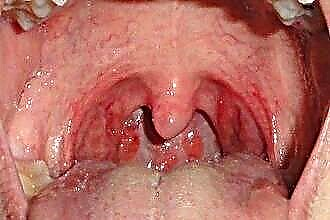Dilation is the expansion (or stretching) of a portion of the heart muscle. This is due to a number of factors. This condition is most common in the left ventricle. Pathology develops gradually. Dilation of the left ventricle leads to rhythm disturbances and signs of heart failure. The disease ends with the complete inability of the myocardium to perform its functions.
Features and classification
 One of the known variants of cardiomyopathy is ventricular dilatation. Expansion of cavities occurs in many patients for no apparent reason. As a result, the superficial function of the myocardium is disturbed, which leads to a rapid increase in its size. The appearance of dysfunction is associated with a decrease in the strength of contractions of the muscle wall of the ventricles. At the same time, there is a decrease in the release of blood into the aorta. During the examination of some patients with dilatation of the cavities, the thickness of the heart wall does not change.
One of the known variants of cardiomyopathy is ventricular dilatation. Expansion of cavities occurs in many patients for no apparent reason. As a result, the superficial function of the myocardium is disturbed, which leads to a rapid increase in its size. The appearance of dysfunction is associated with a decrease in the strength of contractions of the muscle wall of the ventricles. At the same time, there is a decrease in the release of blood into the aorta. During the examination of some patients with dilatation of the cavities, the thickness of the heart wall does not change.
There are the following options for dilatation of the left ventricle of the heart:
- tonogenic;
- myogenic.
With tonogenic dilatation, an expansion of the heart cavity is noted due to an increase in blood flow to them and an increase in pressure. The myogenic form is characterized by an irreversible change in the volume of the chamber. It appears against the background of fiber lengthening and stretching with a simultaneous lack of contractility.
The latter variant of dilatation is most often combined with a decrease in wall tone. It is divided into primary and secondary. The first form develops in acute or chronic myocarditis, cardiosclerosis caused by atherosclerosis. During the initial expansion, a uniform increase in size of the cavity occurs. The function of myocardial contraction is significantly reduced. Pulse and heart rate become weak and poorly felt.
The secondary form occurs already against the background of the formed myocardial hypertrophy. The size of the heart in comparison with the primary is significantly increased.
There are many factors that have a negative effect on the myocardium, but there are certain conditions that contribute to dilatation of the left ventricular cavity:
- Pathology associated with damage to the myocardium itself.
- Excessive load.
Some patients are characterized by an asymptomatic course of the disease against the background of complete health. Over time, if it is impossible to compensate for the condition, signs of the disease appear. This is characteristic of dilated cardiomyopathy. Other causes are inflammation, arterial hypertension, which, over time, make the muscle wall weak. This condition leads to a loss of elasticity and excessive extensibility, which leads to dilatation of the cavity.
An overload of the left chamber of the heart occurs when the functioning of the valve that opens into the aorta is dysfunctional. The narrowing creates an obstruction in the path of blood flow, which over time leads to stretching of the heart tissue and dilatation of the cavity.
This condition is observed in people with defects in which there is a large volume of blood flowing into the ventricle.
Dilation of the right ventricle
 One of the reasons for the expansion of the cavity is considered to be the failure of the valve apparatus. A similar condition is typical for patients who have suffered endocarditis or rheumatism, where the complication was damage to the valve structures. Dilation of the right ventricle occurs in the absence of the pericardium, which occurs in some patients.
One of the reasons for the expansion of the cavity is considered to be the failure of the valve apparatus. A similar condition is typical for patients who have suffered endocarditis or rheumatism, where the complication was damage to the valve structures. Dilation of the right ventricle occurs in the absence of the pericardium, which occurs in some patients.
The result of this pathology is gradually stretching the muscle fibers. The altered atrial septum leads to the dilation of the artery in the lungs. An increase in pressure in this vessel indicates an increase and pressure in the cavity of the right ventricle.
The same negative effect on the heart chamber and defects. They increase the pressure in the pulmonary artery. This process ends with dilatation due to the deficit of the body's compensatory functions.
Symptoms
Moderate expansion of one or two chambers in the heart for a long time may not manifest itself in any way. Often, pathology is discovered by chance, when undergoing a routine examination or treating another disease. Severe dilatation of the cavity leads to a drop in pumping function, which leads to the appearance of signs of heart failure or arrhythmia. These include the following:
- Palpitations of palpitations.
- Dyspnea.
- Blueness of the nasolabial triangle, lips, earlobes, fingertips.
- With the aggravation of the severity of the course, cyanosis spreads to the skin.
- Swelling in the arms and legs.
- Memory impairment.
- Fatigue and weakness persisting after rest.
- Discomfort while lying down.
- Dizziness.
- Headache.
- Feeling of interruptions in the heart.
Dyspnea in the compensation stage appears only with excessive physical exertion. With gradual wear of the myocardium, the condition worsens. Shortness of breath begins to bother with light exertion, and then at rest.
With chronic exposure to unfavorable factors, a change occurs in the myocardium, which leads to a gradual expansion of the cavity and thickening of the walls. Dilation of the left ventricle of the heart in the absence of timely therapy increases the risk of complications. Most often, thrombosis and fibrillation of the ventricles or atria are observed.
In some patients, the valve apparatus is affected, which is manifested by the expansion of the ring, deformation of the structures and ends with the formation of an acquired heart defect.
After the transition from the stage of compensation to decompensation, the appearance of fluid in the abdominal cavity (ascites) is noted, the size of the liver increases (hepatomegaly). The skin of such patients becomes moist and cold to the touch. Systolic blood pressure is reduced. Tachycardia is noted.
On listening, wheezing is heard in the lungs. Determination of the boundaries of the heart shows cardiomegaly (an increase in the size of the heart), the rhythm is disturbed.
Causes
 The expansion of the chamber in the left ventricle often occurs under the influence of several provoking factors. This condition is directly related to the age of the patient, his heredity, the presence of excess body weight. The reasons that negatively affect the myocardium are:
The expansion of the chamber in the left ventricle often occurs under the influence of several provoking factors. This condition is directly related to the age of the patient, his heredity, the presence of excess body weight. The reasons that negatively affect the myocardium are:
- Congenital heart defects. The impact of unfavorable environmental factors occurs already during pregnancy. If the lesion becomes extensive, then the fetus dies. In the case of a slightly pronounced lesion, a defect is formed.
- Inflammatory diseases that include myocarditis, pericarditis, endocarditis. The risk group includes children and adolescents, who often have cases of this pathology.
- Diseases of the cardiovascular system in a chronic form. These include arterial hypertension, angina pectoris, ischemia.
- Metabolic syndrome, the basis of which lies in the presence of an overweight patient and diabetes mellitus.
- Chronic pathology of lung tissue.
- Diseases of the kidneys, endocrine and hematopoietic systems.
- Genetic predisposition.
- Autoimmune disorders.
Chronic alcohol and nicotine intoxication is considered one of the most common dilatation factors.
This group also includes side effects from drugs. Of the endocrine pathology, pheochromocytoma is the most widespread. It is a benign or malignant form of tumor. It is characterized by excessive formation of adrenaline.
Forecast
Every patient with left ventricular dilatation, already knowing what it is, must follow all medical recommendations.With such a diagnosis, early diagnosis and initiation of treatment are important. In advanced forms, the likelihood of developing heart failure is high. In these same patients, the valve apparatus is deformed, which leads to mitral regurgitation. This diagnosis significantly impairs the quality of life and shortens its duration. The prognosis for patients is poor.
The average survival rate for left ventricular dilatation is 10 years. If the course is asymptomatic, then life expectancy is on average 5 years. Patients with chronic heart failure observed in the hospital survive up to 50% of the number of admitted patients.
It is important for each patient to remember that the first symptoms are not considered the norm and require a complex of diagnostic procedures. Timely treatment will reduce the risk of complications, and treatment will prolong life for many years.



